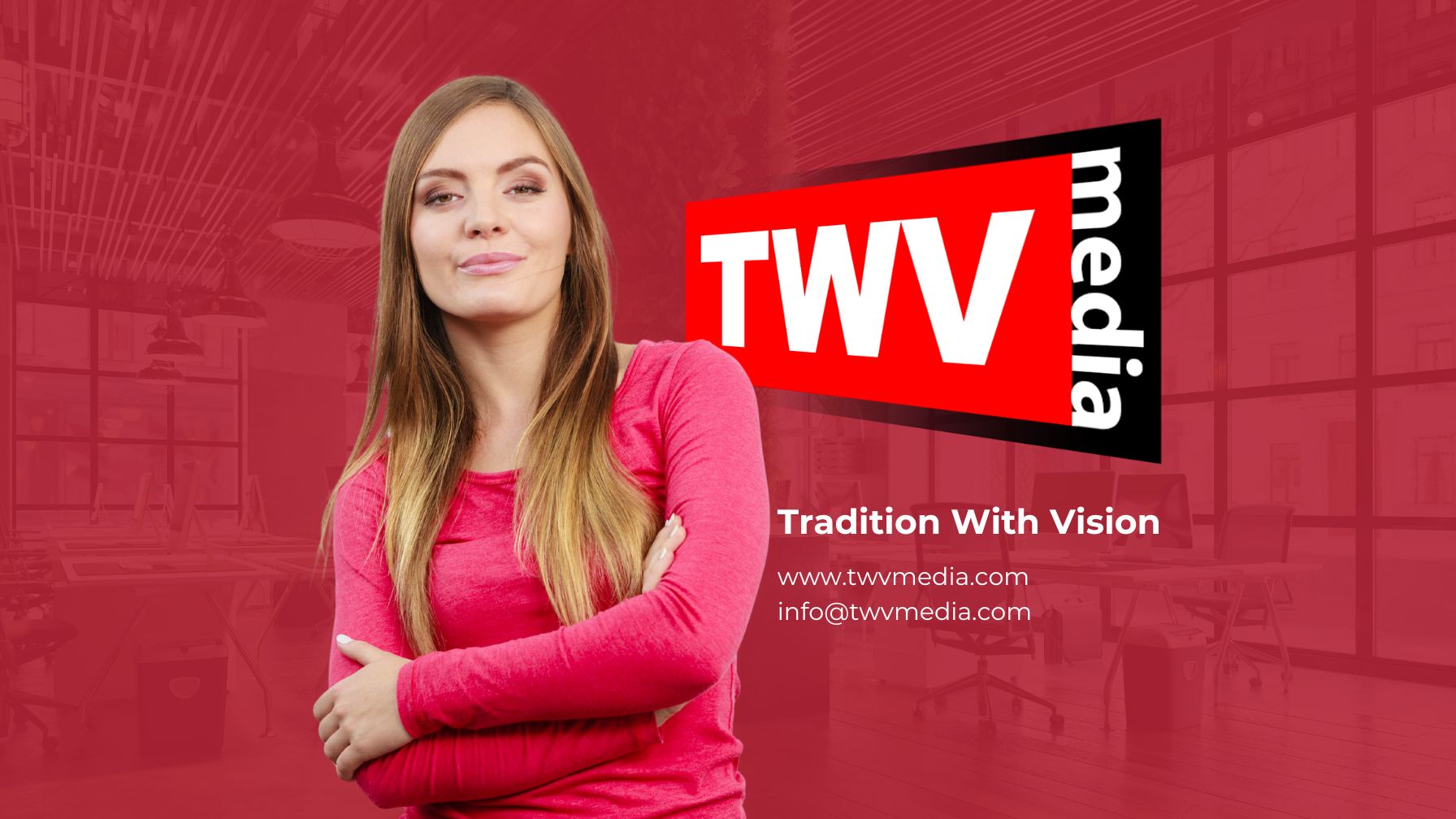Pinterest has emerged as a pivotal platform, steadily growing in significance and offering unique avenues for businesses aiming to broaden their online presence. As we step into 2024, this visual discovery engine stands out not just as a space for inspiration but as a powerful tool for marketers and business owners alike. With over 450 million active users worldwide, Pinterest is not merely a social network; it’s a vast, searchable catalogue of ideas, products, and trends that can drive significant traffic to your website, enhance brand visibility, and foster deeper engagement with your target audience.
The platform’s visual nature, combined with its user base’s intent to discover and plan new projects, purchases, and experiences, presents an unparalleled opportunity for businesses. Pinterest users often seek inspiration with a readiness to act, making it an ideal environment for businesses to showcase their products and services in a compelling, visually appealing manner. From launching new products to building brand awareness and driving sales, Pinterest’s unique ecosystem supports various marketing objectives with its rich, intent-driven user experience.
Recognising the evolving landscape of Pinterest and its growing importance in the digital marketing mix, this article aims to serve as a comprehensive guide for marketers and business owners. We’ll provide a roadmap to effectively utilise Pinterest, outlining strategies to harness its full potential for business growth in 2024. Whether you’re new to the platform or looking to enhance your existing Pinterest strategy, this guide will equip you with the knowledge and tools necessary to embrace Pinterest as a cornerstone of your digital marketing efforts, ensuring your business remains at the forefront of visual and social online marketing.
Understanding Pinterest’s Potential
Market Trends
The latest trends in Pinterest usage underscore its evolving role in the consumer journey, reflecting a deeper integration of visual discovery and shopping behaviours. Pinterest has increasingly become a go-to source for users planning life events, from home renovations and wedding planning to travel and fashion inspiration. This shift towards actionable inspiration is pivotal, with Pinterest leading as a platform where discovery turns into decision-making.
One significant trend is the rise of video content, including Story Pins and video ads, which cater to users’ growing preference for dynamic, engaging content. Furthermore, Pinterest’s enhanced search and recommendation algorithms have made it easier for users to find highly relevant content, making the platform an even more attractive destination for those looking to explore and purchase.
The integration of e-commerce features, such as shoppable pins and the ability to link directly to merchants’ websites, has streamlined the path from inspiration to purchase. This blurs the lines between browsing and buying, making Pinterest an essential tool for businesses aiming to capture consumer interest at the very start of their buying journey.
Business Benefits
Leveraging Pinterest for business in 2024 offers a multitude of benefits, pivotal for companies aiming to enhance their digital footprint and connect with their target audience in meaningful ways:
- Increased Web Traffic: Pinterest acts as a significant driver of traffic to websites. Pins can link back to your site, providing a direct pathway for Pinterest users to explore your products and services further. This not only increases website visits but also enhances the potential for conversions.
- Brand Visibility: With millions of active users, Pinterest offers a vast stage for businesses to increase their brand exposure. By creating visually appealing pins that resonate with your target audience, you can boost brand recognition and keep your business top-of-mind among potential customers.
- Engagement: Pinterest’s unique format encourages users to engage deeply with content, from saving pins to their boards to sharing ideas within their network. This high level of engagement creates a more intimate connection between businesses and consumers, fostering loyalty and encouraging repeat interactions.
- Targeted Reach: Pinterest’s sophisticated search and discovery tools allow businesses to reach their target audience effectively. By using keywords and hashtags strategically in pin descriptions, businesses can ensure their content appears in relevant searches, connecting with users who have a genuine interest in their offerings.
- Consumer Insights: Pinterest’s analytics tools provide valuable insights into consumer preferences and behaviours. By analysing which pins and boards resonate most with users, businesses can tailor their content and product offerings more closely to meet their audience’s needs and interests.
- Longevity of Content: Unlike other social platforms where content can quickly become buried, Pinterest pins have a much longer lifespan. A well-crafted pin can continue to drive engagement and traffic for months, even years, after it’s first posted, providing sustained benefits with a long-term impact.
Pinterest’s evolving platform offers many opportunities for businesses in 2024. By aligning with consumer behaviour and leveraging Pinterest’s unique features, businesses can significantly enhance their online presence, drive meaningful engagement, and achieve their marketing objectives.
Setting Up Your Pinterest Business Account
Setting up a Pinterest business account is the first step towards harnessing the platform’s potential for your marketing strategy. Here’s a comprehensive guide on how to create and optimise your business account, ensuring it accurately reflects your brand and appeals to your target audience.
Creating an Account
- Visit Pinterest for Business: Start by going to Pinterest’s business site. If you already have a personal account, Pinterest offers the option to convert it into a business account, retaining your existing pins and followers.
- Sign Up for a Business Account: Click on “Join as a Business” and fill in your business details, including your email address, business name, website, and the category that best describes your business. Agree to the terms of service and click “Create Account.”
- Verify Your Email: Check your email inbox for a verification email from Pinterest and follow the instructions to verify your email address.
- Claim Your Website: Claiming your website is crucial for accessing analytics and adding your logo to anything pinned from your site. Go to the settings menu, select “Claim,” and then “Claim Website.” Follow the instructions to verify your website with a meta tag or by uploading an HTML file.
- Set Up Your Profile: Upload a profile picture, ideally your business logo, and fill in the “About your business” section, providing a clear and concise description of what your business offers. Remember to include keywords that potential customers might use to find your business.
- Connect Other Accounts: Connect your other social media accounts (such as Instagram, YouTube, or Etsy) to your Pinterest business account. This enhances content authenticity and can increase your content’s reach.
Optimising Your Profile
- Create a Compelling Bio: Your bio should succinctly communicate what your business does and what value it provides to your audience. Use relevant keywords to improve your profile’s searchability.
- Use a Recognisable Profile Picture: Your profile picture should be your business logo or something else easily identifiable with your brand. This helps increase brand recognition and trust among users.
- Create Organised Boards: Start creating boards that reflect different aspects of your business, products, or interests of your target audience. Each board should have a clear, descriptive title and a cover image that represents the board’s content. Use categories and descriptions to enhance discoverability.
- Pin Quality Content: Begin pinning high-quality, relevant content to your boards. Include a mix of your original content and curated content from other sources that align with your brand and audience interests.
- Utilise Keywords: Incorporate relevant keywords into your board titles, board descriptions, and pin descriptions. This SEO practice helps your content appear in search results, both on Pinterest and search engines.
- Engage With Others: Follow other relevant businesses, influencers, and users. Repin, like, and comment on other pins to increase your visibility and engage with the Pinterest community.
- Regularly Update Content: Consistently pinning new content keeps your profile fresh and engaging for followers. Plan a content calendar to maintain a steady flow of new pins.
By following these steps to create and optimise your Pinterest business account, you’ll lay a solid foundation for your Pinterest marketing strategy. An engaging, well-structured account not only reflects your brand’s identity but also attracts and retains a dedicated audience, setting the stage for increased brand visibility and engagement on the platform.
Developing a Pinterest Strategy
Crafting a coherent and focused strategy for your Pinterest activities is essential for maximising the platform’s potential for your business. It begins with setting clear goals, understanding your target audience, and curating a content strategy that resonates with them.
Defining Your Goals
The first step in developing your Pinterest strategy is to define what you aim to achieve. Clear, measurable objectives are crucial for guiding your efforts and assessing your success. Goals may include increasing website traffic, boosting brand awareness, generating leads, or driving sales. Whatever your objectives, ensure they are specific, measurable, achievable, relevant, and time-bound (SMART). For instance, aim to increase traffic to your website from Pinterest by 20% within six months or grow your follower count by 15% in a quarter.
Target Audience
Understanding who your target demographic on Pinterest is and what they are interested in is pivotal for tailoring your content and messaging. Pinterest’s user base is diverse, with interests spanning numerous categories. Conduct market research to identify your ideal customers’ demographics, interests, and behaviours on Pinterest. Look into Pinterest Analytics to gain insights into who is interacting with your pins and what content they prefer. This information will help you tailor your content strategy to match your audience’s preferences and needs.
Content Strategy
Your content strategy should align with both your business goals and the interests of your target audience. Here are key considerations for planning your content:
- Types of Pins: Utilise a variety of pin types, including standard pins, video pins, Story Pins, and Rich Pins (for products, recipes, articles, etc.), to engage your audience in different ways. Each type offers unique benefits and can be used to tell your brand’s story more effectively.
- Content Themes: Develop themes or categories for your boards that reflect your business offerings and your audience’s interests. This could range from DIY projects, fashion inspiration, home decor ideas, to how-to guides, depending on your industry.
- Visual Appeal: Given Pinterest is a visual platform, ensure your pins are visually appealing. Use high-quality images, attention-grabbing graphics, and on-brand colours and fonts. Your visual content should stand out in a user’s feed and encourage engagement.
- Keyword Optimisation: Incorporate relevant keywords into your pin titles, descriptions, and board titles to improve their visibility in search results. Conduct keyword research to identify terms your target audience is searching for on Pinterest.
- Consistency and Frequency: Develop a consistent posting schedule to keep your audience engaged and attract new followers. Determine the best times to post based on when your audience is most active.
- User Engagement: Plan content that encourages user interaction, such as contests, polls, or questions in your pin descriptions. Engaging with your audience builds a community around your brand.
- Analytics and Adaptation: Use Pinterest Analytics to track the performance of your pins and boards. Analyse what’s working and what isn’t, and adapt your strategy accordingly to optimise results.
A well-thought-out Pinterest strategy is a dynamic document that evolves based on your business goals, audience insights, and performance analytics. By setting clear objectives, understanding your audience, and meticulously planning your content, you can effectively use Pinterest to grow your business and achieve your marketing objectives.Content
Creation and Curation
For businesses looking to succeed on Pinterest, the creation and curation of content play a critical role. High-quality visuals, compelling pin descriptions, and engaging video content are key components of a Pinterest strategy that captivates and converts. Here’s how to leverage these elements effectively:
High-Quality Visuals
The cornerstone of Pinterest’s appeal lies in its visual nature. High-resolution, eye-catching images are essential for standing out in a user’s crowded feed. Visuals should not only be of high quality but also reflect your brand’s aesthetic and resonate with your target audience. Here are some tips:
- Consistency in Branding: Ensure your visuals maintain a consistent style that aligns with your brand. This includes using your brand colors, fonts, and logos where appropriate to enhance brand recognition.
- Image Quality: Use high-resolution images to ensure your pins look crisp and engaging across all devices. Pinterest recommends a 2:3 aspect ratio (such as 1000×1500 pixels) for optimal display.
- Visual Appeal: Incorporate compelling elements into your images, such as vibrant colors, interesting textures, or striking compositions, to grab attention.
- Context and Relevance: Ensure your visuals accurately represent the content they’re linked to, providing context and relevance to the viewer.
Pin Descriptions
The description accompanying each pin is a powerful tool for increasing visibility and engagement. A well-crafted description serves two main purposes: it provides context and value to the user and improves your content’s discoverability through search engine optimisation (SEO).
- Keyword-Rich Descriptions: Incorporate relevant keywords naturally into your pin descriptions to improve your pins’ searchability on Pinterest and search engines.
- Clear and Concise: Communicate the value of what you’re pinning in a clear and engaging manner. Aim for descriptions that entice users to click through while being informative.
- Call to Action: Including a call to action (CTA) can significantly increase engagement. Encourage users to visit your website, read a blog post, or check out a product with a compelling CTA.
- Use of Hashtags: While not as central as on other platforms, strategic use of hashtags can help your pins reach a broader audience. Include a few relevant hashtags at the end of your description.
Video Content
Video pins are an increasingly important part of Pinterest’s ecosystem, offering a dynamic way to engage users and convey more complex messages.
- Storytelling: Use video to tell a story about your brand or products. Videos can provide a deeper insight into the benefits, usage, or background of your offerings in a way that static images cannot.
- Educational Content: How-to videos, tutorials, and DIY projects perform exceptionally well on Pinterest. They add value to your audience and can lead to higher engagement rates.
- Quality and Length: Ensure your videos are high quality and kept to an appropriate length. Short, engaging videos tend to perform better, keeping in mind the platform’s preference for concise content.
- Optimisation: Like with static pins, make sure your video pins include keyword-rich descriptions and titles to improve their visibility. Also, consider the first few seconds of your video carefully; they need to capture attention quickly.
By prioritising the creation and curation of high-quality visuals, crafting compelling, keyword-rich descriptions, and leveraging video content, businesses can significantly enhance their Pinterest presence. These elements, when executed effectively, not only attract attention but also drive engagement and, ultimately, conversions.
Leveraging Pinterest Features for Business Growth
Pinterest offers several features designed to help businesses grow their presence and reach their marketing objectives. Among these, Rich Pins, Pinterest Analytics, and advertising options stand out as particularly effective tools. Understanding and utilising these features can significantly enhance your Pinterest strategy.
Rich Pins
Rich Pins provide more context about an idea because they automatically sync information from your website to your pins. There are several types of Rich Pins, including Product Pins, Article Pins, and Recipe Pins, each tailored to different kinds of content:
- Product Pins: These make shopping easier by including real-time pricing, availability, and where to buy your product. For businesses selling products, Product Pins can drive direct sales from Pinterest.
- Article Pins: Perfect for bloggers, publishers, or businesses that produce content, Article Pins include a headline, author, and story description, helping to drive traffic to your original content.
- Recipe Pins: These include ingredients, cooking times, and serving information for recipes, making them a great choice for food bloggers, chefs, and restaurants.
To use Rich Pins, you’ll need to apply by adding meta tags to your website and validating them through Pinterest’s Rich Pin Validator. Once approved, all content pinned from your site will automatically include the additional details, enhancing user experience and engagement.
Pinterest Analytics
Pinterest Analytics is a powerful tool for understanding how your content performs on the platform. It offers insights into a wide range of metrics, including:
- Impressions and Reach: Understand how many people are seeing your pins and how widely they’re being distributed.
- Engagement: Track how users interact with your pins through saves, clicks, and comments.
- Website Activity: See how Pinterest drives traffic to your website and which content resonates most with your audience.
To leverage Pinterest Analytics effectively:
- Monitor Performance: Regularly check your analytics to see which pins and boards are performing best.
- Understand Your Audience: Use demographic and interest data to refine your content strategy and target your audience more effectively.
- Adjust Strategy: Based on insights, adjust your pinning strategy to focus on what works best, whether it’s the type of content, the timing of your pins, or how you use keywords.
Advertising on Pinterest
Pinterest Ads offer a way to reach a broader audience and achieve specific business goals, such as increasing brand awareness, driving more traffic, or boosting conversions. Here’s a brief overview of how to create effective ad campaigns:
- Choose Your Goal: Start by selecting a campaign goal that aligns with your business objectives, such as brand awareness, video views, or conversions.
- Target Your Audience: Use Pinterest’s targeting options to reach specific demographics, interests, and behaviours.
- Create Engaging Ads: Design visually appealing ads that resonate with your target audience. Use high-quality images or videos and include clear, compelling copy.
- Set Your Budget: Decide on a daily or lifetime budget for your campaign, and choose your bid strategy.
- Measure and Optimise: Use Pinterest Analytics to track the performance of your ads.
Analyse the data to understand what’s working and make adjustments to improve your ROI.
Whether through enriching content with Rich Pins, gaining insights with Pinterest Analytics, or expanding reach with Pinterest Ads, these tools are instrumental in achieving business growth on the platform.
Engagement and Community Building
Building a vibrant community on Pinterest not only enhances your brand’s visibility but also fosters loyalty and encourages user interaction. Engagement and community building are key components of a successful Pinterest strategy. Here are some effective ways to interact with followers and the wider Pinterest community, utilise collaborative boards, and encourage user-generated content.
Engaging with Users
Interacting with your followers and other users on Pinterest can significantly boost your brand’s presence and create a more engaging experience. Here are some tips for effective engagement:
- Respond to Comments: Take the time to reply to comments on your pins. This shows your audience that you value their feedback and are engaged in the community.
- Follow and Interact: Follow other relevant users, brands, and influencers. Like, comment on, and repin content that aligns with your brand to increase your visibility and encourage reciprocation.
- Use Messaging: Pinterest’s messaging feature allows for direct communication with followers. Use it to thank users for sharing your content, answer questions, or share ideas relevant to their interests.
- Create Engaging Content: Ask questions in your pin descriptions or create pins that prompt user interaction, such as polls or quizzes.
Collaborative Boards
Group boards are a powerful tool for reaching a wider audience and engaging with the community. They allow multiple users to contribute pins to the same board, combining different perspectives and audiences.
- Join Relevant Boards: Look for group boards in your niche that are accepting new contributors. This can help you reach people interested in your content.
- Create Your Own Group Boards: Invite other users, influencers, or brands to pin to your boards. Choose collaborators whose content aligns with your brand values and audience interests.
- Set Clear Guidelines: To maintain the quality of the board, establish clear guidelines for contributors regarding the type of content, frequency of pins, and any thematic restrictions.
- Promote Interaction: Encourage contributors and followers to engage with the content on the board through comments and shares, fostering a sense of community.
User-Generated Content
Encouraging your audience to create and share content related to your brand can significantly boost engagement and provide authentic testimonials for your products or services.
- Create a Hashtag: Develop a unique hashtag for your brand or specific campaigns. Encourage users to use it when pinning content related to your products or services.
- Feature User Content: Share user-generated content on your boards, giving credit to the original creators. This not only provides you with authentic content but also encourages more users to share their own experiences with your brand.
- Hold Contests or Challenges: Launch contests or challenges that prompt users to create content around a theme related to your brand. Offer incentives such as discounts, free products, or features on your official boards.
- Celebrate Your Community: Regularly acknowledge and thank your community for their contributions. Highlighting user content or success stories can strengthen your relationship with your audience.
Case Studies and Success Stories
Several businesses across a variety of industries have leveraged Pinterest effectively, using the platform to drive traffic, increase sales, and enhance brand visibility. Their success stories provide valuable insights and inspiration for others looking to optimise their Pinterest strategy. Here are a few noteworthy examples:
1. Etsy
Industry: E-commerce, Handmade Goods, and Vintage Items
Pinterest Strategy: Etsy uses Pinterest to showcase a vast selection of unique, handcrafted, and vintage goods from sellers around the world. Their boards are carefully curated by themes, occasions, and trends, making it easy for users to discover and pin products they love.
Success Factors: High-quality product images, strategic use of keywords in pin descriptions for SEO, and boards that reflect current trends and seasons. Etsy’s success on Pinterest is also due to the platform’s natural alignment with their target audience’s interests in DIY, crafts, and unique gift ideas.
2. Whole Foods Market
Industry: Retail, Grocery
Pinterest Strategy: Whole Foods Market uses Pinterest to share recipe ideas, cooking tips, and healthy eating inspiration. Their boards are organised by food categories, dietary preferences, and meal types, appealing to a broad audience.
Success Factors: Engaging, high-quality images of dishes, use of Recipe Pins to provide detailed information directly in the pins, and content that supports the brand’s image as a provider of healthy, organic food options.
3. Airbnb
Industry: Travel, Accommodations
Pinterest Strategy: Airbnb utilises Pinterest to inspire travel and showcase their listings around the world. Their boards are filled with travel tips, destination guides, and beautiful photos of unique homes and experiences available through Airbnb.
Success Factors: Captivating images that evoke wanderlust, curated boards for different travel themes and destinations, and direct links to their website for easy booking. Airbnb’s Pinterest presence enhances its brand as a source for unique travel experiences.
4. BuzzFeed
Industry: Digital Media
Pinterest Strategy: BuzzFeed uses Pinterest to drive traffic to their articles, quizzes, and videos. Their content is diverse, covering topics like recipes, DIY projects, fashion, and more, designed to be highly shareable and engaging.
Success Factors: A strong focus on creating viral, relatable content that encourages repins and clicks, well-crafted Article Pins with compelling headlines, and a variety of boards that appeal to different interests and demographics.
5. Sephora
Industry: Beauty, Cosmetics
Pinterest Strategy: Sephora’s Pinterest account is a beauty enthusiast’s dream, filled with makeup tutorials, product recommendations, and beauty tips. Their boards are meticulously organised by product types, beauty trends, and how-to guides.
Success Factors: Use of high-quality, visually appealing product images, video tutorials, and Rich Pins for products to provide extra details and direct links for shopping. Sephora’s strategy is focused on providing value and inspiration, positioning the brand as an authority in beauty.
These case studies demonstrate that success on Pinterest requires a combination of high-quality visuals, strategic content curation, and a deep understanding of the target audience’s interests and needs. By following these examples, businesses can develop a Pinterest presence that not only reflects their brand identity but also effectively engages their audience and drives meaningful results.
Best Practices and Pitfalls to Avoid
Maximising the potential of Pinterest for your business involves adhering to best practices while being mindful of common pitfalls. Here’s a summary of key strategies to embrace and mistakes to avoid in your Pinterest marketing efforts for 2024.
Best Practices for Pinterest Marketing
- Optimise for Visual Appeal: Ensure all your pins feature high-quality, visually compelling images or videos. The aesthetic appeal of your content is crucial on this highly visual platform.
- Utilise Rich Pins: Take advantage of Rich Pins to provide more context and information directly on your pins, whether you’re sharing articles, recipes, or products.
- Keyword Optimisation: Incorporate relevant keywords in your pin descriptions, board titles, and profiles to improve your content’s discoverability.
- Consistent Pinning: Maintain an active presence by consistently pinning new and relevant content. This helps keep your audience engaged and increases your visibility on the platform.
- Leverage Pinterest Analytics: Use analytics to gain insights into what content performs best, who your audience is, and how they interact with your pins. Adjust your strategy based on these insights.
- Engage with Your Community: Build a community by engaging with your followers and other users. Respond to comments, repin content from others, and participate in group boards.
- Focus on Your Audience: Tailor your content to meet the interests and needs of your target audience. Understanding your audience is key to creating content that resonates and drives engagement.
- Use Pinterest Ads: Consider investing in Pinterest ads to reach a larger or more targeted audience. Ads can be a powerful tool for increasing visibility and achieving specific business goals.
Common Pitfalls to Avoid
- Ignoring SEO Practices: Failing to use keywords and hashtags effectively can make your content hard to find. Ensure your SEO strategy is robust to improve visibility.
- Inconsistent Branding: Your Pinterest account should reflect your brand identity. Inconsistencies in visual style or tone can confuse your audience and dilute your brand message.
- Overlooking Analytics: Not utilising Pinterest Analytics to track your performance is a missed opportunity. Analytics provide valuable insights that can inform and improve your strategy.
- Being Too Promotional: While it’s important to showcase your products or services, overly promotional content can deter users. Balance promotional pins with inspirational, educational, or entertaining content.
- Neglecting Pin Quality: Low-quality images or poorly designed pins can harm your brand’s image and reduce engagement. Invest time in creating visually appealing content.
- Failing to Engage: Not interacting with your followers or participating in the wider Pinterest community can limit your growth. Engagement is key to building relationships and loyalty.
- Not Adapting Your Strategy: Sticking rigidly to a strategy without considering performance data or changing trends can hinder your success. Be flexible and willing to adjust your approach based on insights and feedback.
By following these best practices and avoiding common pitfalls, businesses can effectively leverage Pinterest to connect with their audience, enhance their brand’s visibility, and achieve their marketing goals in 2024.
Conclusion
As we’ve explored throughout this guide, embracing Pinterest as a marketing tool in 2024 presents a unique and potent opportunity for businesses aiming to enhance their digital presence. Pinterest’s visual nature, combined with its engaged and intent-driven user base, makes it an unparalleled platform for inspiring and connecting with consumers. By leveraging Pinterest, businesses can significantly boost their brand visibility, drive traffic to their websites, and ultimately, increase sales.
The strategies discussed—ranging from setting up and optimising your business account, developing a targeted content strategy, leveraging Pinterest’s unique features like Rich Pins and analytics, to engaging with the community and avoiding common pitfalls—are designed to provide a comprehensive roadmap for success on this platform.
Now is the time for businesses to start implementing these strategies. The dynamic and visual world of Pinterest is ripe with possibilities for growth and engagement. By focusing on high-quality, relevant content, and by actively engaging with the Pinterest community, businesses can unlock the platform’s full potential.
The journey to Pinterest success is iterative and requires ongoing effort, creativity, and adaptation. However, the rewards—in terms of increased visibility, engagement, and conversions—are substantial. By committing to a thoughtful and strategic approach to Pinterest marketing, businesses can not only reach their target audiences more effectively but also build lasting relationships with consumers that drive real results.
Let 2024 be the year your business harnesses the power of Pinterest, turning pins into progress and inspiration into action. Start today, and watch as your digital marketing landscape transforms, revealing new paths to success and growth on one of the most vibrant and effective platforms available.






